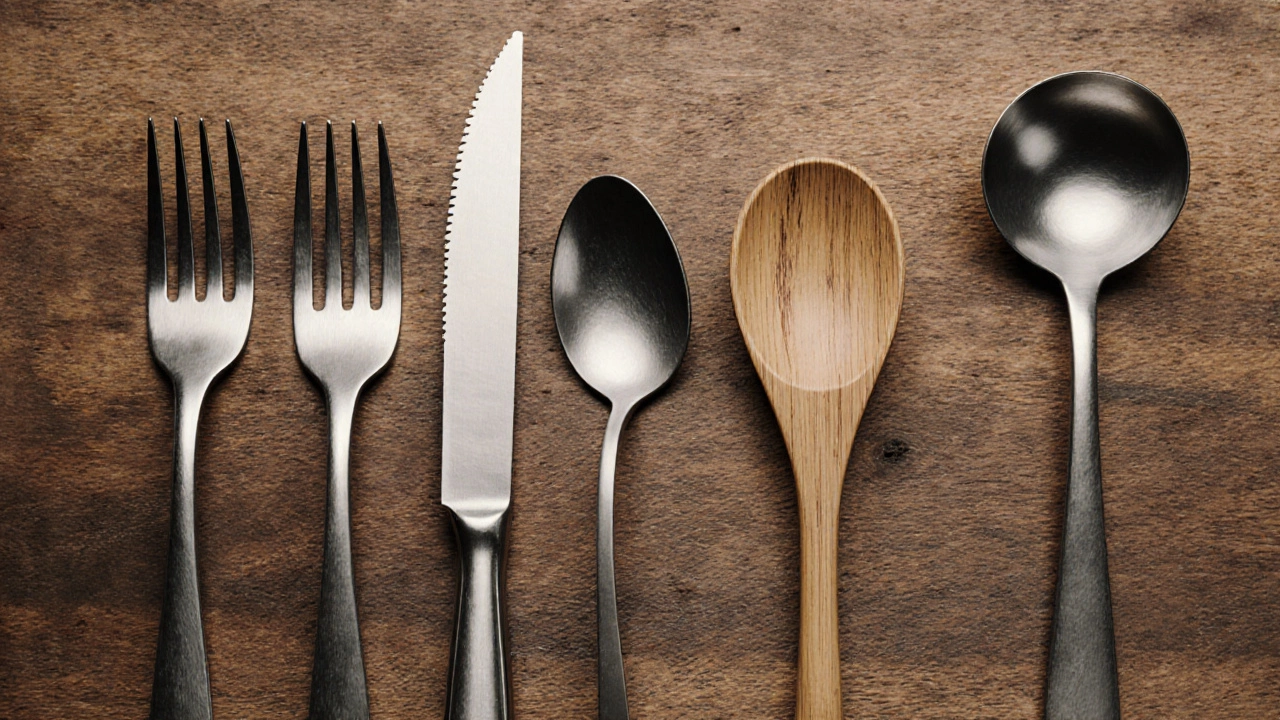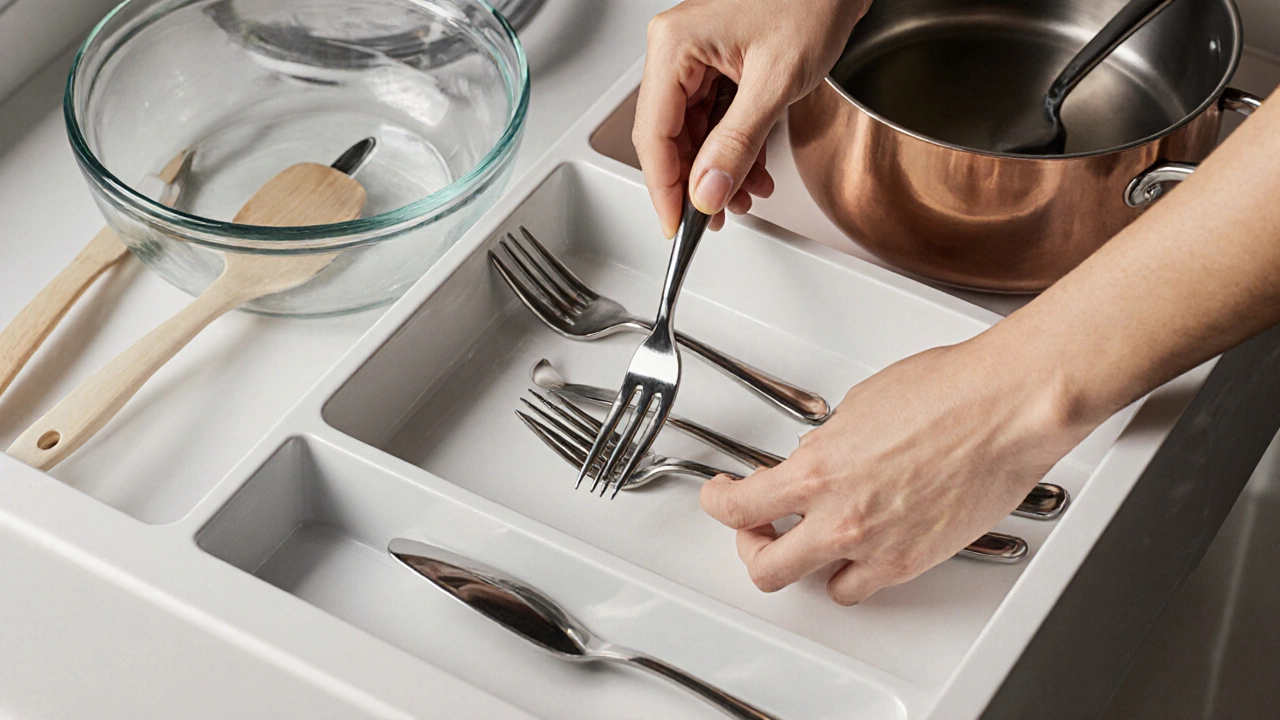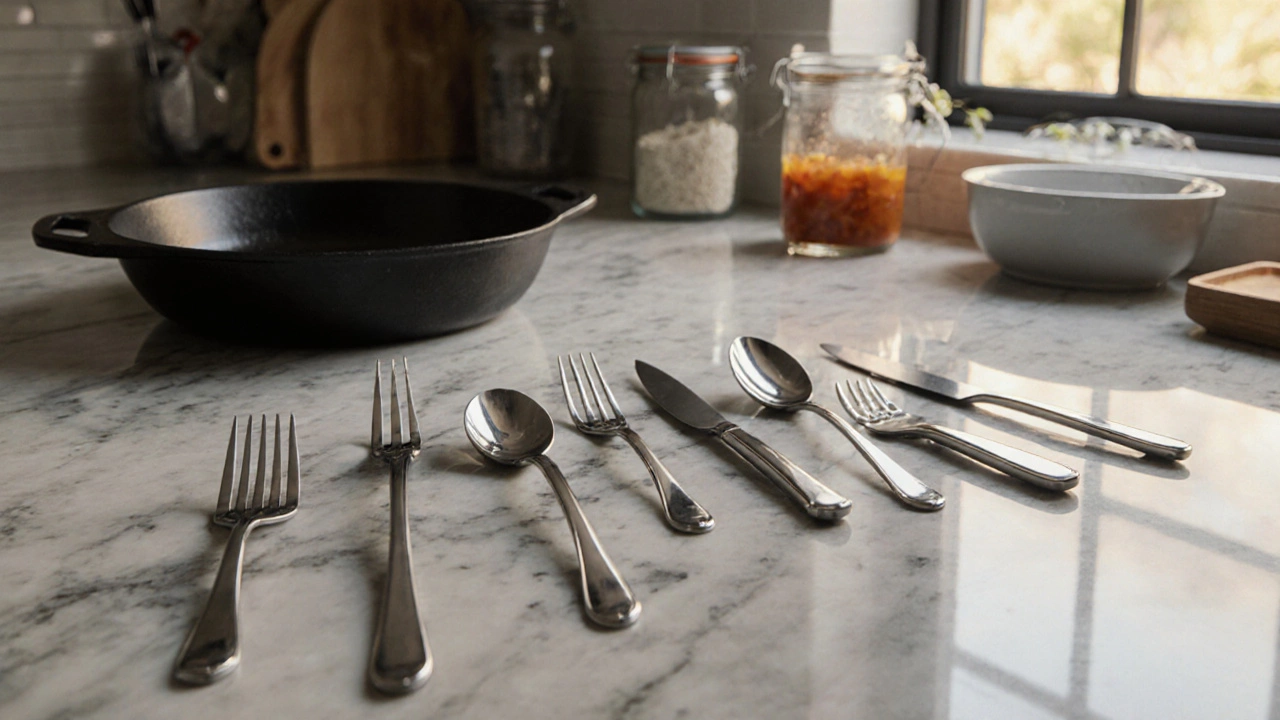When you pull out a fork, a spoon, or a steak knife for a dinner, you instinctively reach for what you think of as ‘cutlery’. But does that term belong inside the broader world of kitchenware, or is it a separate kingdom altogether? The short answer is yes: cutlery is a core part of kitchenware, but the relationship is richer than a simple yes-or-no. Below we’ll untangle the definitions, explore the overlap, and give you practical tips for choosing, using, and caring for these everyday tools.
What Exactly Is Cutlery?
Cutlery refers to the handheld implements used for eating, serving, and preparing food at the table. The most common pieces are forks, spoons, and knives, but the category also stretches to include specialty items like steak knives, butter knives, and soup spoons. In many English‑speaking countries, especially the UK and US, “cutlery” is synonymous with “flatware,” though the latter term is more widely used in North America to emphasize the flat, metal nature of these items.
Defining Kitchenware
Kitchenware is a broader umbrella that covers any object used in the preparation, cooking, storage, or serving of food. This includes cookware (pots, pans), bakeware (cake tins, rolling pins), storage containers, and of course, table‑setting accessories. Anything that helps you move food from the pantry to the plate falls under this banner.
How Cutlery Fits Inside Kitchenware
Because cutlery is used at the point of consumption rather than the point of preparation, it often feels separate from a pot or a spatula. Yet every piece of cutlery is still a functional tool that interacts with food, making it a distinct sub‑category of kitchenware. Think of kitchenware as a family tree: at the top is the family name, and the branches are cookware, bakeware, and eating tools. Cutlery lives on the “eating tools” branch.

Key Players: Forks, Spoons, Knives, and More
Below are the most common types of cutlery, each with its own role in everyday dining.
- Fork: Tines allow you to spear or lift solid foods. In the West, the standard dinner fork has four tines, while salad forks often sport a longer handle.
- Spoon: Cups of broth, scoops of rice, or dollops of dessert all rely on a rounded bowl. Tablespoons and teaspoons are measured by volume, but dinner spoons tend to be deeper.
- Knife: From butter knives to steak knives, the blade’s edge determines the cutting task. A chef’s knife is a kitchen tool, while a dinner knife is cutlery.
- Ladle: Technically a serving utensil, the ladle bridges the gap between preparation and serving. It’s often stored with other kitchenware but used at the table for soups and stews.
- Flatware: A collective term that includes forks, knives, and spoons. In the US, “flatware” is the preferred label, while “cutlery” is more common in the UK.
- Utensil: A generic label for any tool used in food handling, ranging from spatulas to tongs. When we say “eating utensil,” we’re usually pointing back at cutlery.
Comparison: Cutlery vs. Other Kitchenware Categories
| Category | Primary Use | Typical Materials | Common Items |
|---|---|---|---|
| Cutlery (Flatware) | Eating and serving at the table | Stainless steel, silver, silver‑plated, bamboo | Fork, spoon, knife, serving forks |
| Cookware | Cooking on stovetop or oven | Cast iron, stainless steel, aluminum, copper | Skillet, saucepan, Dutch oven |
| Bakeware | Baking and roasting | Aluminum, silicone, Pyrex glass | Cake tin, muffin pan, roasting tray |
| Storage Containers | Keeping leftovers fresh | Plastic, glass, stainless steel | Meal prep boxes, canisters, jars |
| Serving Utensils | Transferring food from dishes to plates | Stainless steel, wood, melamine | Ladle, serving spoon, tongs |
Choosing the Right Cutlery for Your Kitchenware Collection
Now that you see where cutlery sits, how do you pick pieces that blend seamlessly with the rest of your kitchen? Here are the top criteria to balance aesthetics, durability, and cost.
- Material Matters: Stainless steel (18/10 grade) offers rust resistance and a bright finish. For a touch of tradition, consider sterling silver, but budget for regular polishing. Bamboo and recycled wood appeal to eco‑friendly homes and add warmth.
- Weight and Balance: A well‑balanced fork or spoon feels lighter in the hand and provides better control. Heavier pieces often signal higher quality, yet too much heft can be tiring during long meals.
- Style Consistency: If your kitchen leans modern, go for sleek, matte finishes. Rustic kitchens shine with hammered or engraved patterns that echo other cookware.
- Set Size: A basic four‑person set includes 4 forks, 4 knives, 4 spoons, and 4 soup spoons. Expand to 6 or 8‑person sets if you host gatherings regularly.
- Care Requirements: Some finishes are dishwasher‑safe, while others need hand‑washing to avoid dulling. Check the manufacturer’s advice before you buy.

Maintaining Cutlery - Tips to Keep It Looking Fresh
Even the best‑made cutlery can lose its shine if neglected. Follow these simple habits:
- Rinse immediately after use to prevent food residues from corroding the metal.
- Use a soft sponge; abrasive pads can scratch high‑polish finishes.
- If you store in a drawer, separate pieces with a soft liner to avoid clattering.
- Polish silver‑plated items with a non‑abrasive cloth and a mild silver cleaner once a month.
- Rotate your sets occasionally so no single piece bears the brunt of daily use.
Frequently Asked Questions
Is cutlery considered part of kitchenware?
Yes. Cutlery - forks, spoons, knives, and related eating tools - is a sub‑category of kitchenware. Kitchenware covers everything used to prepare, cook, store, and serve food, and cutlery fulfills the serving and eating functions.
What’s the difference between “cutlery” and “flatware”?
Both terms refer to forks, knives, and spoons. “Flatware” is the preferred term in North America, while “cutlery” is common in the UK and other Commonwealth countries. The distinction is regional, not functional.
Can I store cutlery with my other kitchenware?
Yes, but keep it separate from heavier items like pots and pans to avoid dents. Drawer organizers or a cutlery tray work well. Some people prefer a countertop caddy for easy access.
What material is best for everyday cutlery?
18/10 stainless steel offers a good balance of durability, corrosion resistance, and price. It’s dishwasher‑safe and holds its shine for years.
How often should I replace my cutlery?
If you keep up with proper care, stainless‑steel cutlery can last a decade or more. Look for signs of rust, warped handles, or permanent dullness as cues to replace individual pieces.
Wrap‑Up: The Bottom Line
Understanding the taxonomy of your kitchen helps you make smarter buying decisions and keep everything looking its best. Cutlery is undeniably a branch of the larger kitchenware family. Treat it with the same thoughtfulness you give your pots and pans, and your dining experience will feel more cohesive, stylish, and functional.
